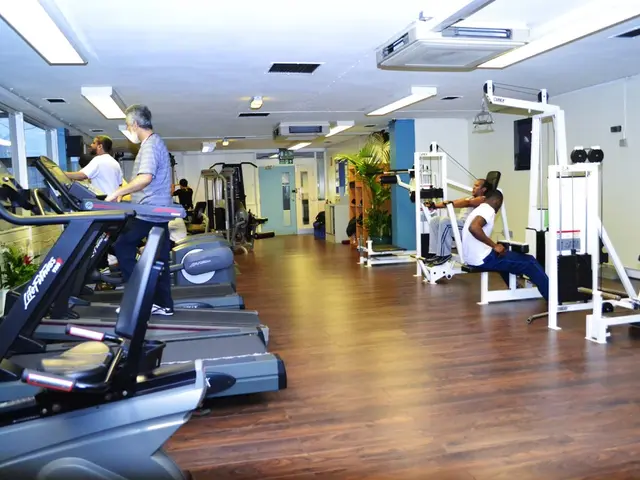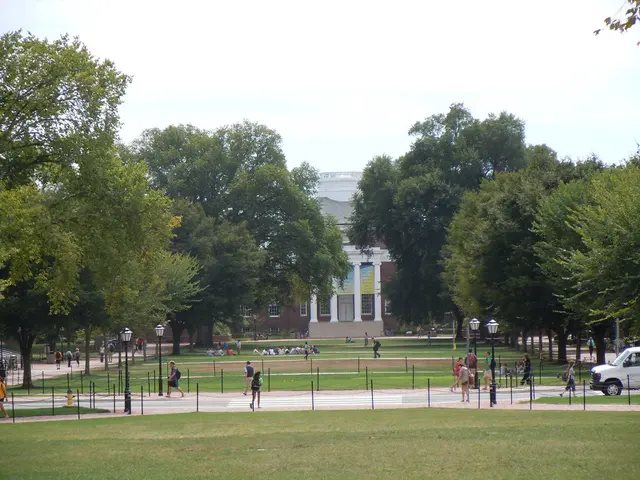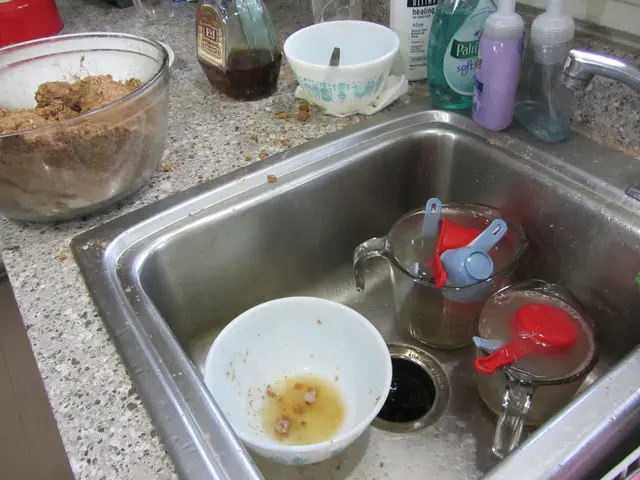Permanent Fissure Cure Without Surgery: A Guide
In the realm of gastrointestinal health, chronic anal fissures can be a painful and recurring issue for many individuals. This article aims to shed light on the various treatments available, focusing on non-surgical approaches.
Anal fissures, small tears in the anal lining, often cause discomfort during and after defecation, with or without bleeding. If left untreated, they can lead to a vicious cycle of poor healing and recurrence due to persistent contributing factors.
Fortunately, a range of treatments exists to help manage this condition. Non-surgical approaches typically begin with dietary modifications, such as increasing fiber intake through fruits, vegetables, or supplements to soften stools. Hydration, by drinking plenty of water, and the use of stool softeners are also crucial in reducing strain during bowel movements.
Warm sitz baths, where one sits in warm water several times a day, can provide relief from pain and promote healing. Topical medications, such as lidocaine cream for pain relief and agents that relax the internal anal sphincter, collectively known as "chemical sphincterotomy," are also part of the arsenal. These include glyceryl trinitrate, calcium channel blockers (like diltiazem), and even botulinum toxin injections.
Botox injections, while not FDA-approved for the treatment of anal fissures, paralyze the internal anal sphincter for about 3-4 months to aid in the fissure's healing. However, it should be noted that recurrence rates can be high, up to 42% of the time.
Topical nitrates, such as nitroglycerine, and calcium channel blockers can help relax the muscles around the anus and increase blood flow to the fissure, promoting healing.
Natural remedies, such as laxatives and sitz baths, are more effective in treating acute, rather than chronic, fissures. It's essential to remember that the treatment or home remedies are effective if a person no longer experiences symptoms associated with anal fissures.
In many cases, these measures aim to reduce anal sphincter spasm and promote natural healing of the fissure. The success rate for pharmacological/non-surgical treatments is reported between 65% and 75%, though recurrence and incomplete healing are common, especially with chronic fissures.
If these treatments fail, surgical intervention like lateral internal sphincterotomy (LIS) may be considered. However, non-surgical methods are recommended as first-line therapy due to their high success rate (up to 96% to 100%) and lower risk of complications like fecal incontinence.
Healing of anal fissures may take 6-8 weeks but may require up to 12 weeks. It's crucial for anyone experiencing symptoms to consult a doctor for proper diagnosis and treatment.
In summary, effective non-surgical treatments include dietary fiber, hydration, stool softeners, sitz baths, and topical muscle-relaxing agents. With about two-thirds of patients achieving healing, these methods are a valuable first step in managing chronic anal fissures. Surgery is reserved for refractory cases.
Anal fissures, often causing discomfort and potentially recurring issues, are tears in the anal lining that affect many individuals. This article highlights various treatments, focusing on non-surgical approaches for management.
Increasing dietary fiber through food sources like fruits, vegetables, or supplements softens stools, aiding in treatment. Hydration by drinking plenty of water and using stool softeners also play a significant role.
Warm sitz baths alleviate pain and promote healing and are part of the treatment plan. Topical medications, such as lidocaine cream for pain relief and chemical sphincterotomy agents, are common. These include glyceryl trinitrate, calcium channel blockers like diltiazem, and even botulinum toxin injections.
Though not FDA-approved, Botox injections paralyze the internal anal sphincter for temporary relief, but recurrence rates can be high. Topical nitrates and calcium channel blockers promote healing by relaxing the anal muscles.
Natural remedies like laxatives and sitz baths are more effective for acute fissures, and their success is judged by the absence of associated symptoms.
Science and medication work together to reduce anal sphincter spasm and promote natural healing. The success rate of pharmacological/non-surgical treatments is between 65% and 75%, though chronic fissures may not always heal completely.
If these measures prove ineffective, surgical intervention like lateral internal sphincterotomy (LIS) may be considered. Non-surgical methods are preferred due to their high success rate (up to 96% to 100%) and lower risk of complications like fecal incontinence.
Healing time for anal fissures can range from 6-8 weeks to up to 12 weeks. Anyone experiencing symptoms should consult a doctor for diagnosis and treatment.
In essence, effective non-surgical treatments include fiber-rich diets, hydration, stool softeners, sitz baths, and topical muscle-relaxing agents. Chronic anal fissures can be managed with these methods, with about two-thirds of patients achieving healing. Surgery is reserved for refractory cases.
Efforts in the workplace-wellness allow for a more holistic approach to health management, addressing conditions like depression, diabetes, HIV, obesity, asthma, chronic kidney disease, respiratory conditions, eye health, hearing, and other chronic diseases.
Mental health, skin care, nutrition, finance, and lifestyle are critical components of health and wellness. Building a sustainable lifestyle incorporates fitness and exercise, gardening, outdoor living, food and drink, home and garden, home improvement, baking, personal finance, and lifelong learning.
Skills training, sports, mindfulness, shopping, car maintenance, productivity, career development, product reviews, electric vehicles, online education, job search, learning, goal-setting, lifelong learning, and personal growth contribute to a balanced and healthy lifestyle.
Home design, with a focus on interior design and smart home technology, also plays a role in maintaining physical and mental well-being. Sustainable living practices such as budgeting, technology, healthy cooking, deals and discounts, and education and self-development further enhances overall health and wellness.





